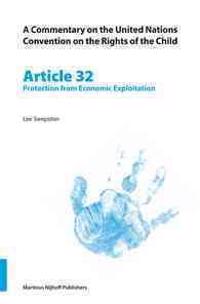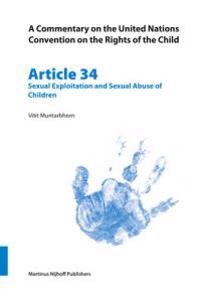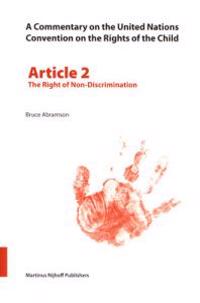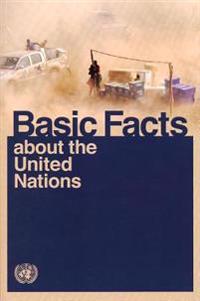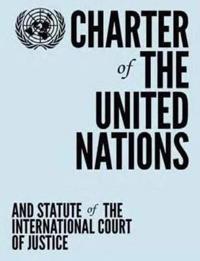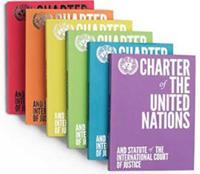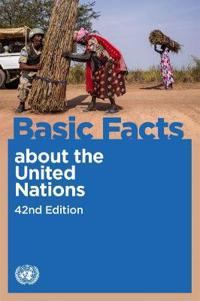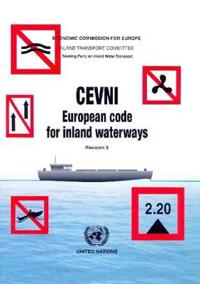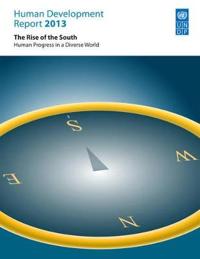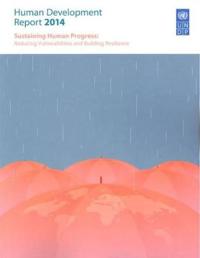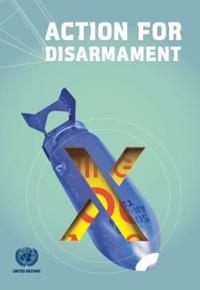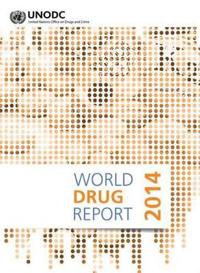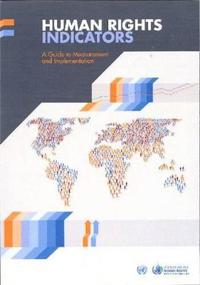A Commentary on the United Nations Convention on the Rights of the Child, Article 32: Protection from Economic Exploitation (häftad)
ISBN: 9789004148833 - UTGIVEN: 2012-06A Commentary on the United Nations Convention on the Rights of the Child: Article 34
ISBN: 9789004148840 - UTGIVEN: 2007-11This volume constitutes a commentary on Article 34 of the United Nations Convention on the Rights of the Child. It is part of the series, A Commentary on the United Nations Convention on the Rights of the Child, which provides an article by article analysis of all substantive, organizational and pro[...]
A Commentary on the United Nations Convention on the Rights of the Child, Article 2 The Right of Non-Discrimination
ISBN: 9789004149175 - UTGIVEN: 2008-07This volume constitutes a commentary on Article 2 of the United Nations Convention on the Rights of the Child. It is part of the series, A Commentary on the United Nations Convention on the Rights of the Child, which provides an article by article analysis of all substantive, organizational and proc[...]
The Law and Practice of the United Nations
ISBN: 9789004186293 - UTGIVEN: 2010-09"The Law and Practice of the United Nations" examines the law of the United Nations through an analysis of the Organization s practice from its inception until the present, in particular to the transformations the UN has undergone since the end of the Cold War. Special consideration is given to Chap[...]
The United Nations Convention on the Rights of the Child: Taking Stock After 25 Years and Looking Ahead
ISBN: 9789004295049 - UTGIVEN: 2016-11In 2014 the world's most widely ratified human rights treaty, one specifically for children, reached the milestone of its twenty-fifth anniversary. The UN Convention on the Rights of the Child was adopted after the fall of the Berlin Wall, and in the time since then it has entered a new century, res[...]
The United Nations Convention on the Law of International Watercourses
ISBN: 9789041116529 - UTGIVEN: 2001-07Problems relating to the non-navigational uses of international watercourses have the capacity to be among the most serious causes of international conflicts in the 21st century. The Convention adopted by the UN General Assembly on 21 May 1997 is an attempt to provide at the universal level a cohere[...]
United Nations: The Story Behind the Headquarters of the World (Inbunden)
avAke E:Son Lindman, Mark Isitt
ISBN: 9789171263438 - UTGIVEN: 2016-04-04Rights to territory: the case of the United Nations : the matters of disposition, administration an possession (häftad)
ISBN: 9789176789445 - UTGIVEN: 2018-12Disposition, administration and possession of territory have occurred throughout of the history of mankind, often resulting all together in conquest and annexation. In more modern times the peace treaties of Osnabrück and Münster in 1648 (Westphalian Peace), ending the war of the ?Thirty Years? in[...]
Charter of the United Nations and Statute of the International Court of Justice
ISBN: 9789211012835 - UTGIVEN: 2015-10The Charter of the United Nations was signed in 1945 by 51 countries representing all continents, paving the way for the creation of the United Nations on 24 October 1945. The Statute of the International Court of Justice forms part of the Charter. The aim of the Charter is to save humanity from war[...]
Charter of the United Nations and Statute of the International Court of Justice, Orange
ISBN: 9789211012903 - UTGIVEN: 2015-12The Charter of the United Nations was signed in 1945 by 51 countries representing all continents, paving the way for the creation of the United Nations on 24 October 1945. The Statute of the International Court of Justice forms part of the Charter. The aim of the Charter is to save humanity from war[...]
Charter of the United Nations and Statute of the International Court of Justice (häftad)
ISBN: 9789211012934 - UTGIVEN: 2015-08The Charter of the United Nations was signed in 1945 by 51 countries representing all continents, paving the way for the creation of the United Nations on 24 October 1945. The Statute of the International Court of Justice forms part of the Charter. The aim of the Charter is to save humanity from war[...]
Charter of the United Nations and Statute of the International Court of Justice (häftad)
ISBN: 9789211012941 - UTGIVEN: 2015-09The Charter of the United Nations was signed in 1945 by 51 countries representing all continents, paving the way for the creation of the United Nations on 24 October 1945. The Statute of the International Court of Justice forms part of the Charter. The aim of the Charter is to save humanity from war[...]
Basic Facts about the United Nations (häftad)
ISBN: 9789211013504 - UTGIVEN: 2017-07This comprehensive handbook designed for the general public explains the structure of the United Nations, how the Organization works, the main issues it addresses and its importance for people everywhere. In addition to setting out the various roles played by principle UN organs and related organiza[...]
CEVNI European Code of Inland Waterways (Pocket)
avUnited Nations Publications (COR)
ISBN: 9789211169768 - UTGIVEN: 2008-01Risk Management in Regulatory Frameworks (Häftad)
avUnited Nations: Economic Commission for Europe
ISBN: 9789211170689 - UTGIVEN: 2013-08Citizen Engagement Practices (Pocket)
avUnited Nations (COR)
ISBN: 9789211231953 - UTGIVEN: 2014-06This publication provides an overview of successful examples and innovations in the engagement of citizen in public accountability processes through Supreme Audit Institutions. The purpose of this book is to disseminate, through comparative case studies and analysis, and conceptual framework, inform[...]
Human Development Report 2013 (Häftad)
avUnited Nations Development Programme
ISBN: 9789211263404 - UTGIVEN: 201007Human Development Report 2014 (Pocket)
avUnited Nations Development Programme (COR)
ISBN: 9789211263688 - UTGIVEN: 2014-07Over the last decades, most countries have improved levels of human development. But progress maybe slowing as uncertainty intensifies globally. This report examines vulnerabilities that endanger human development, focusing especially on the poorest. Most threats are structural and persistent and li[...]
Action for Disarmament (Pocket)
avUnited Nations (COR)
ISBN: 9789211422870 - UTGIVEN: 2014-01This publication speaks to young people by encouraging them to engage in an active and thoughtful way in this important issue for all of humankind. It is full of practical ideas including starting a discussion group, hosting a film screening, or creating an event where students and their friends can[...]
World Drug Report 2014 (Pocket)
avUnited Nations (COR)
ISBN: 9789211482775 - UTGIVEN: 2014-11The World Drug Report presents a comprehensive overview of the latest developments in drug markets. It covers production, trafficking, consumption and the related health consequences. Chapter 1 of this year's Report examines the global situation and the latest trends in the different drug markets an[...]
Human Rights Indicators (Häftad)
avUnited Nations: Office of the High Commissioner for Human Rights
ISBN: 9789211541984 - UTGIVEN: 2013-09Human Rights Indicators: A Guide to Measurement and Implementation aims to assist in developing quantitative and qualitative indicators to measure progress in the implementation of international human rights norms and principles. It describes the conceptual and methodological framework for human rig[...]

